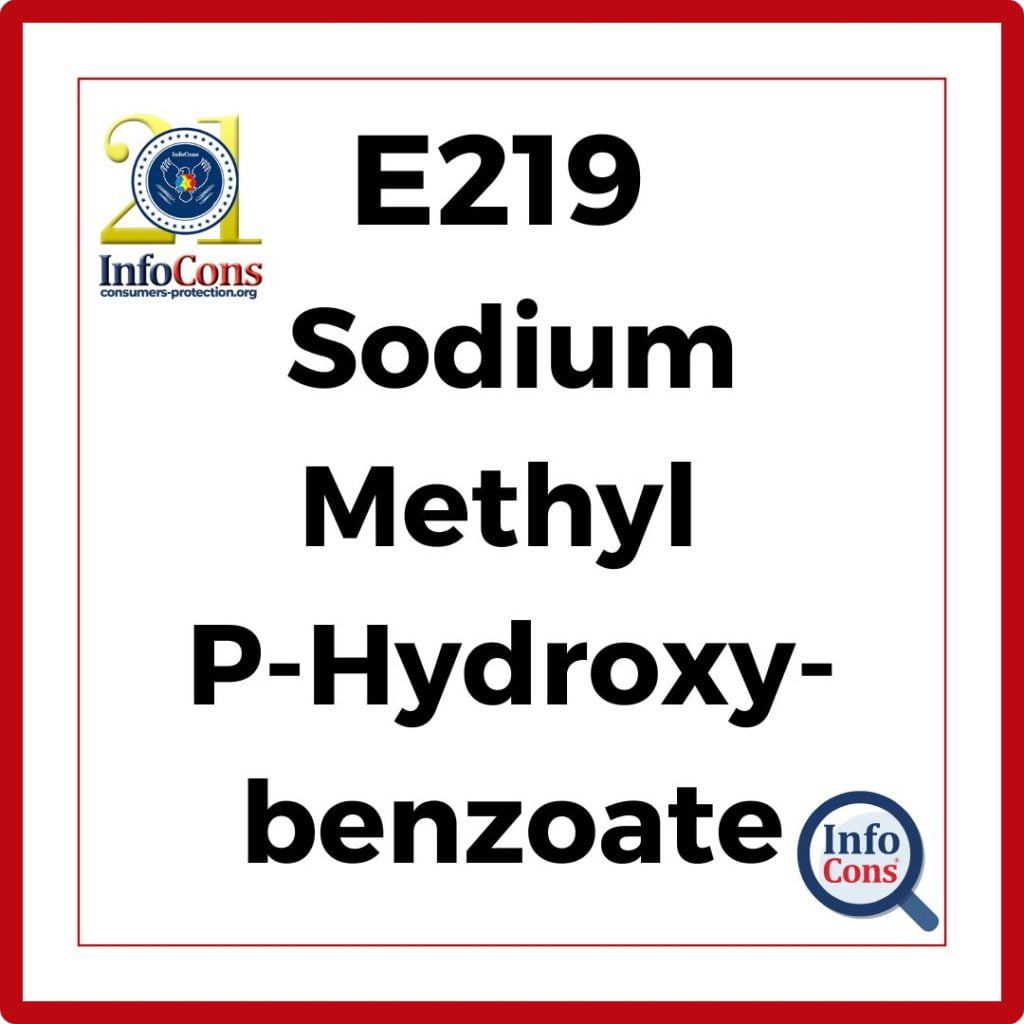
What is food additive E219 ?
E219 is a widely used food additive that plays a crucial role in preserving the freshness and safety of various products. This preservative, part of the larger family of parabens, significantly impacts the shelf life and quality of foods and cosmetics.
E219 is poorly soluble but is still found in many food and cosmetic products. It is used as a preservative against yeasts and molds, but is less effective against bacteria. Understanding its properties, applications, and potential health effects is essential for both consumers and producers.
Expert Q&A : The Impact of Ultra-Processed Foods on Health – InfoCons Consumer Protection Informs You!
What is the recommended daily dose ?
The use of E219, like other parabens, has been subjected to extensive research. Regulatory bodies such as the European Food Safety Authority (EFSA) and the U.S. Food and Drug Administration (FDA) have set the maximum allowable dose at 10 mg/kg body weight per day for the safe use of parabens, including E219, in food and cosmetics. The European Union has established specific maximum allowable concentrations for parabens in foods and cosmetic products, ensuring they are used within safe limits.
In which products is the food additive E219 found ? InfoCons Consumer Protection informs you !
Food Industry
In the food industry, E219 is primarily used as a preservative. Its antimicrobial properties make it an excellent choice for extending the shelf life of various food products, including:
- Bakery products: E219 helps prevent mold and yeast in bread, cakes, and pastries, ensuring they stay fresh for longer periods.
- Beverages: Soft drinks, fruit juices, and syrups often contain E219 to maintain their quality and prevent spoilage.
- Processed foods: Ready-to-eat meals and sauces use E219 to enhance shelf life and safety.
Cosmetics and Pharmaceuticals
Beyond the food industry, E219 is also used in cosmetics and pharmaceuticals. It is commonly found in:
- Lotions and creams: It prevents the growth of harmful microorganisms, ensuring the product remains safe and effective for use.
- Shampoos and conditioners: Helps maintain the product’s integrity and prevent contamination.
- Pharmaceutical products: Used in ointments, creams, and other topical applications to prevent microbial growth.
In Which Products is the E218 Additive Found ? InfoCons Consumer Protection informs you !
Contraindications and Risks
In some individuals, benzoates can cause mild pseudo-allergic reactions. Additionally, parabens (E214, E215, E218, E219) appear to have an estrogenic effect (increasing estrogen production). In combination with azo food dyes, they promote hyperactivity in children (ADHD syndrome).
However, recent studies suggest that when used within regulated limits, E219 does not pose significant health risks to consumers.
Natural preservatives such as rosemary extract, grapefruit seed extract, and certain essential oils are gaining popularity. These alternatives are perceived as safer and more environmentally friendly, although they may not always offer the same level of antimicrobial protection as synthetic preservatives.
In conclusion, E219 is a vital preservative that significantly contributes to the safety and longevity of foods, cosmetics, and pharmaceutical products. While its use is regulated to ensure consumer safety, ongoing research and monitoring remain essential.
Download the InfoCons App !
Look for products that have a cleaner label or use natural additives. By installing Consumer Protection InfoCons App and scanning the barcodes of food products, you can find out the number and type of food additives they contain.
Author – Cosmina Nițu
Master in Nutrition – Infant and new born nutrition
Sources:
https://www.efsa.europa.eu/en/ – European Food Safety Authority (EFSA)
InfoCons – European Organization for Consumers Protection and Promotion of Programs and Strategies , a full member of the World Organization Consumers International, founding member of the Federation of Consumer Associations, and member of ANEC.